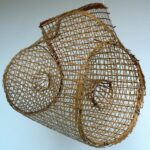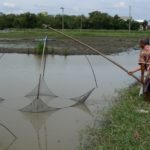Squid is a main source of income for many fishermen in villages around the Gulf of Thailand and the Andaman Sea. Because fish are becoming increasingly rare, whereas Cephalopods maintain their population. Only certain types of finfish are sold profitably, and the rest are processed into fish sauce or fishmeal. On the other hand, squid of all sizes are always in demand.

Which kind of animals are caught in those squid traps?
SEAFDEC, the Southeast Asian Fisheries Development Center, presented a study in which it was found that in Rayong province, 94% of animals caught in squid traps were Bigfin reef squid (Sepioteuthis lessoniana), 1% Pharaoh cuttlefish (Sepia pharaonic), and only 5% finfish. There were three species of finfish caught: Brownstripe red snapper (Lutjanus vitta), Longfin batfish (Platax teira), and Fan bellied leatherjacket fish (Monacanthus chinensis)
The Bigfin reef squid is commonly called หมึกกล้วย in Thailand, which means ‘Banana squid’. An English description of this squid species can be found here.
The following map shows its widespread distribution over Asia-Pacific, the Near-Middle East, and Madagascar.
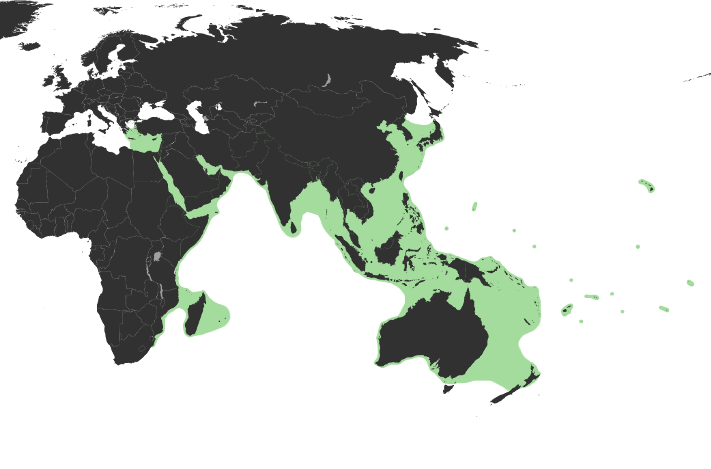
Squid trap design
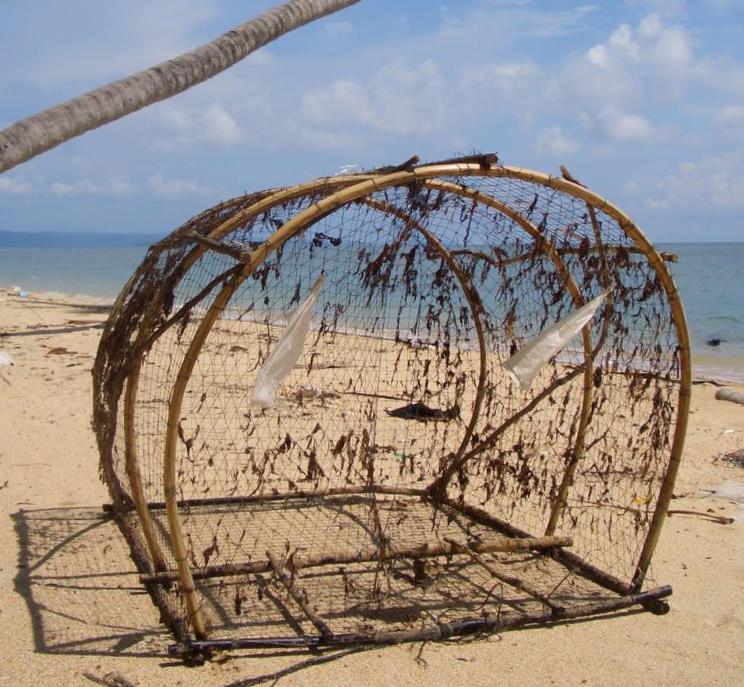
The trap has a rectangular bottom frame connecting three wooden hoops. These hoops are placed on either side by horizontal frame sticks and diagonal sticks. The Thai builder of such traps phonetically called the species of wood used ‘Mamphala’ (ไม้มะพลา) and ‘Thu’ (ทำไม้). I could not find the correct scientific names for these types of wood.
Typical dimensions of such a frame are:
- Bottom frame frontal length = 1 m
- Max. height of frontal frame = 0.8 m
- Depth of squid trap = 1.2 m
These sizes were measured on various traps at Koh Mak. Measurements on traps in the Rayong area and on the Andaman Sea coast were slightly smaller (0.9 x 0.8 x 1.05 m). The whole frame will now be covered with 4×4 cm / 1 ½ x 1 ½‘’ mesh-sized netting.
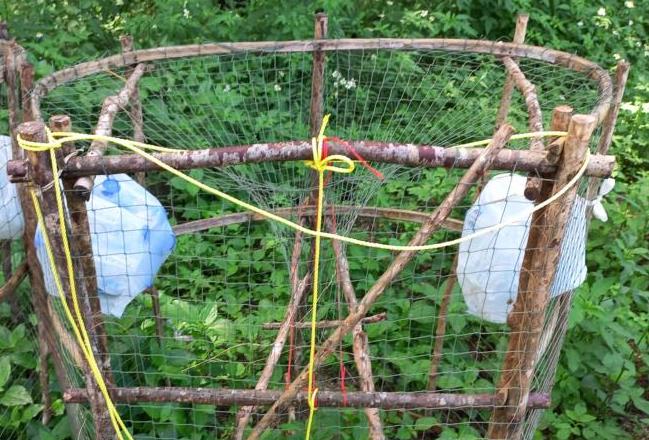
At the front side, the entrance is designed as a small slit which is funneled backward towards the middle of the whole trap’s depth. The two ropes marking the entrance funnel are held by different design principles, depending on location and trapmaker.
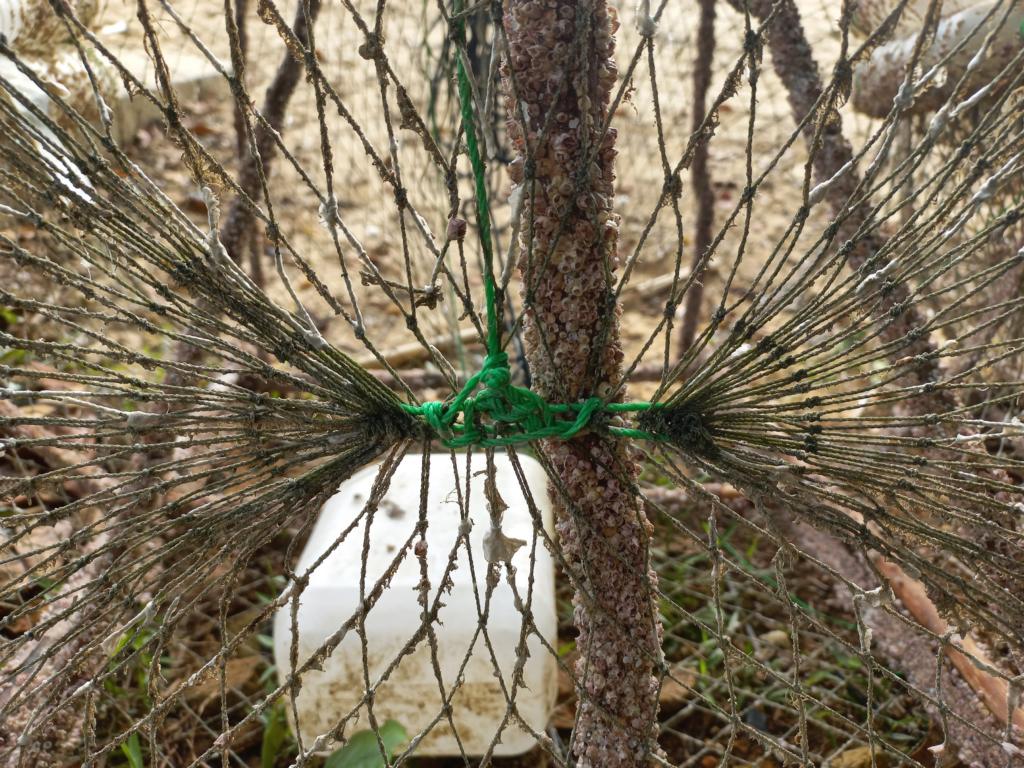
The backside is sometimes possible to open. However, the catch is mainly removed from the trap by gripping through the entrance funnel.
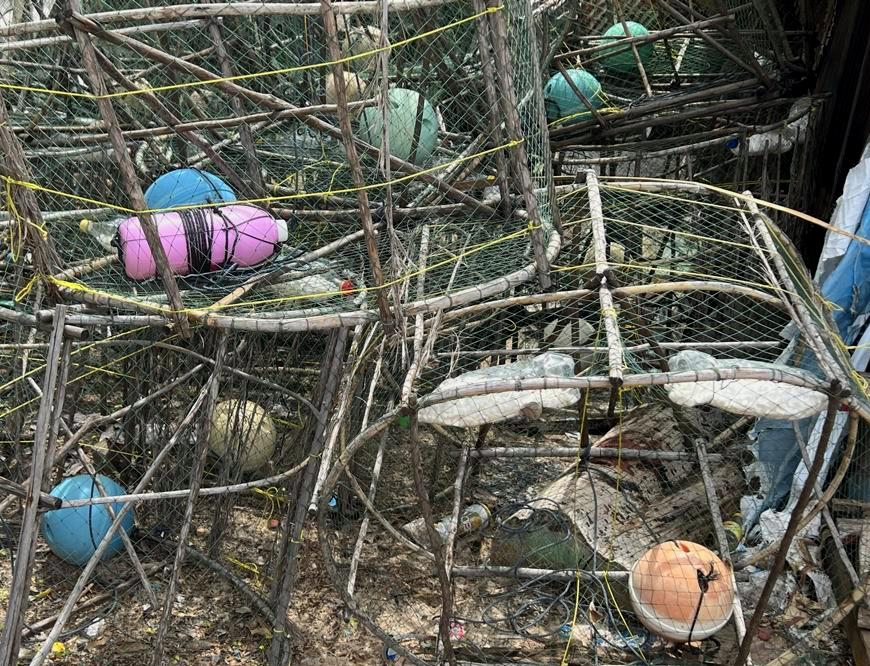

To ensure floating, closed plastic containers or Styrofoam are attached to the trap, located inside or outside the netting.

How do you attract squids to get into the traps?
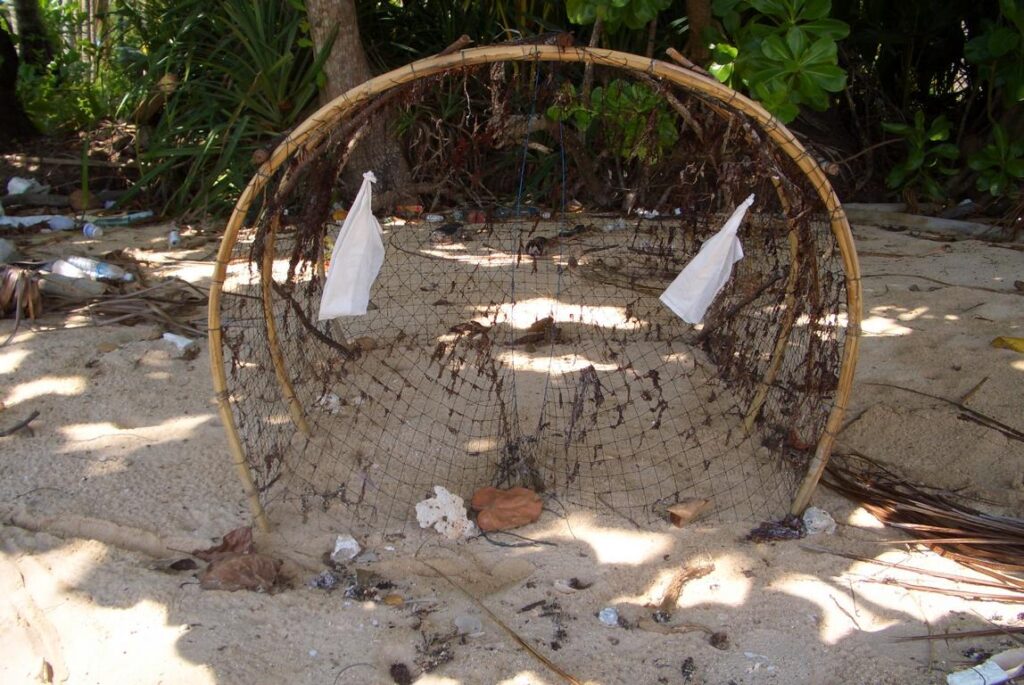
Two white plastic bags will be knotted into the mesh next to the entrance funnel as attractants for male squids. These are mainly caught in deeper waters below about 12 meters, where the red colors (natural light) are already filtering out, and the white plastic bags act as an attractant.
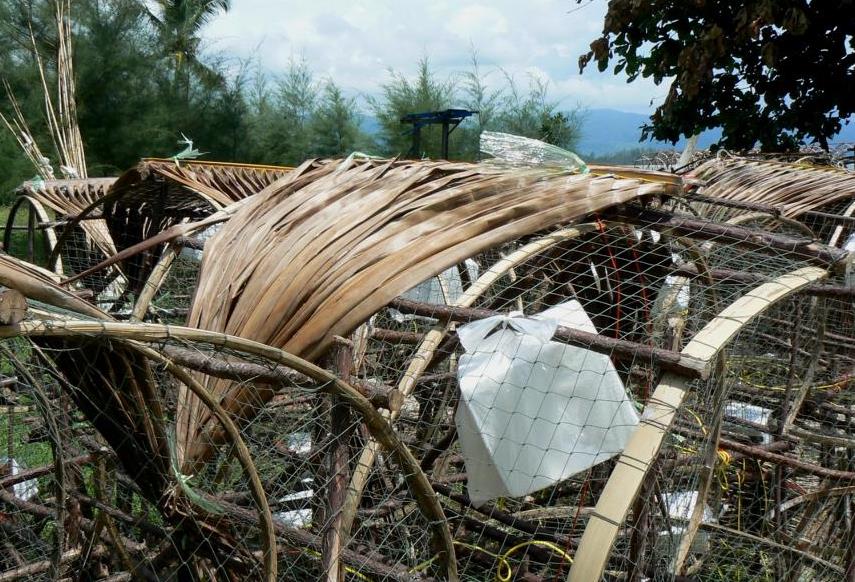
Females swim midlevel between the seabed and the water surface, constantly looking for food and substrates to deposit their egg capsules. The fisherfolk know from experience that these eggs are mainly deposited in shaded places in the water, which are often driftwood or swimming palm fronds.
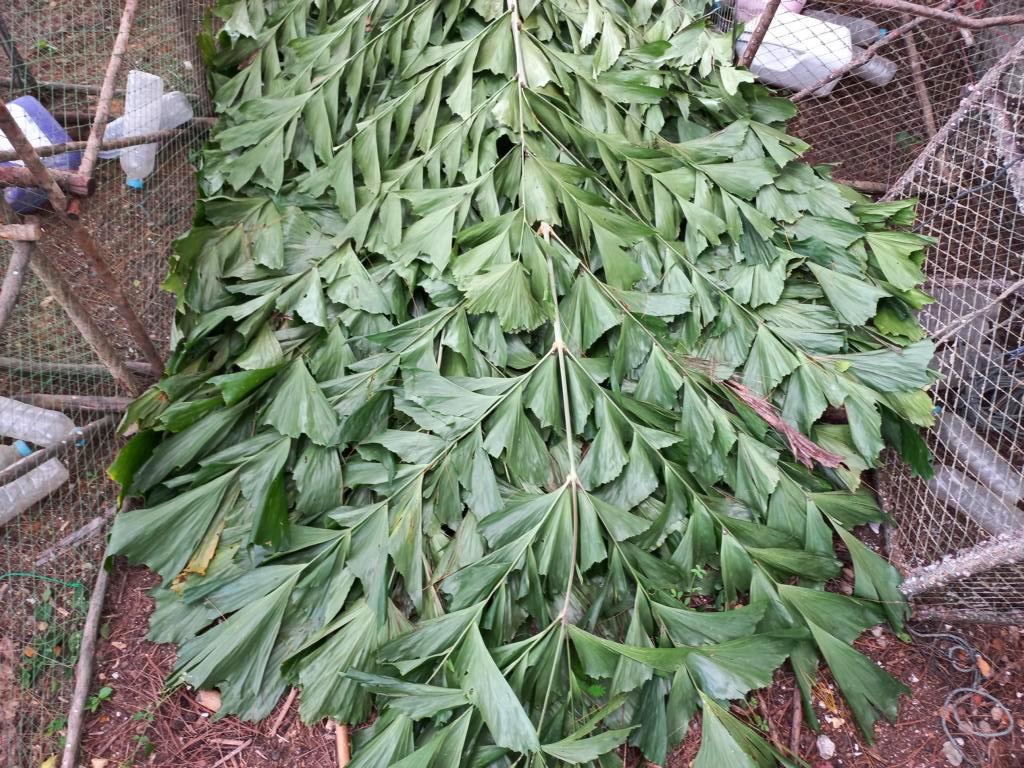
To utilize this behavior, the traps will be decked with palm fronds from either coconut- (Cocos nucifera) or fishtail (Caryota kiriwongensis) palms.

Strings of squid eggs hung below the fronds within the trap are an additional attractant for female squids, who enter the trap to lay their egg capsules.
How do you catch squids in these traps?
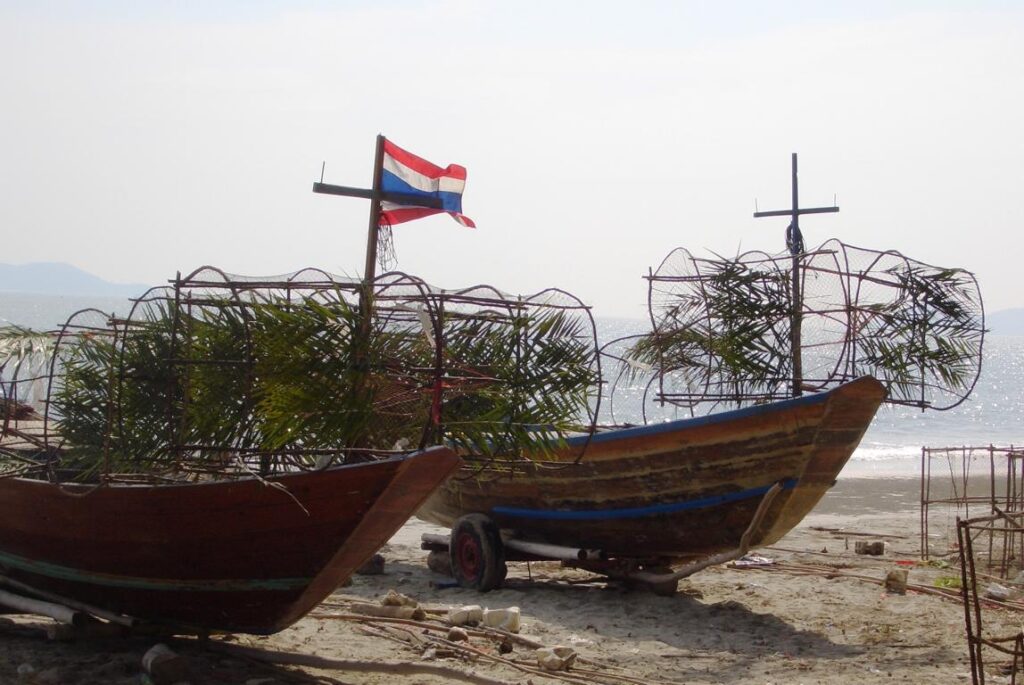
Usually, the traps are prepared for fishing in the mid-afternoon and brought out to the sea in the late afternoon. Depending on the location, they are deployed at depths of 10-40 meters and in such a way that they float 2-3 meters above the sea floor.
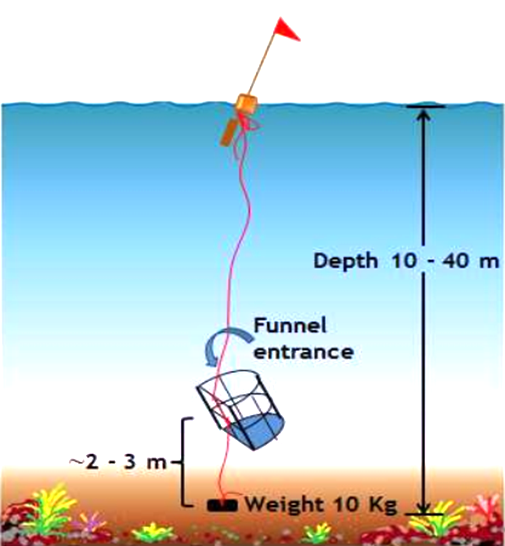
Picture: © Witanuwarat A. et al., Catch analysis of squid trap fishing in the coastal area of Rayong province, Thailand; Kasetsart University.
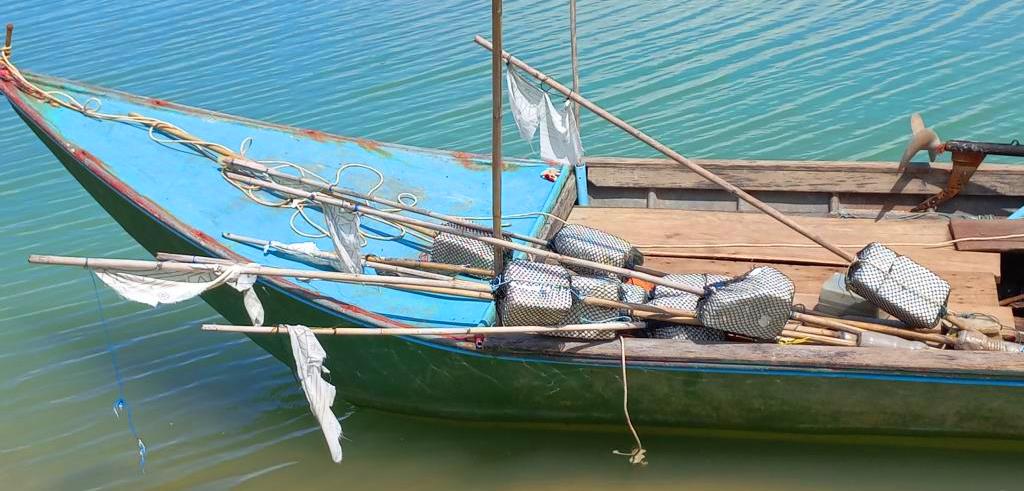
The traps are anchored by a 10 – 15kg weight on the sea bottom, and a line connects them to a floating bamboo pole with a flag. This flag pole will mark the position of the trap.

Bigfin reef squids are usually most active at night, especially when the moon is full and the tide is high.
Every one or two days in the morning, the traps are retrieved into the fishing boat. The catch is scooped out, and the empty trap is provisionally cleaned with a whip of textile strips. After that, new squid eggs are hung inside, and palm fronds are replaced if necessary. The trap will be deployed at the same position again for another catch.
Drawbacks of squid traps
Such devices have been used for many years, and no drop in squid numbers has been recorded. They, therefore, seem to be a sustainable way of harvesting squids.
There are nevertheless some concerns associated with this. Firstly, due to its working principle, at least 80% of the catch are female squid in shallow waters looking for an egg capsule-attaching substrate. Conversely, male squid are mainly caught in deeper waters. Therefore, depending on the trap location depth, the same quid gender type will always be caught in the majority.
Secondly, a significant part of Thailand’s ALDFG traps (Abandoned, lost, and discarded fishing gear) are such traps. They shift through stormy weather, getting lost; ropes or knots break, and they end up as traps, which indiscriminately attract a variety of reef fish and crustaceans. And never getting pulled up again, but just acting as a death trap. When scuba diving, the author saw such ALDFG traps full of fish with no chance of getting released or consumed again.
As however, it is an easy and efficient way of catching squid, environmental concerns are for the local fishermen and -women of secondary importance.
Lessons learned about squid traps.
- Don’t use these traps yourself. There are more environmentally friendly ways of catching squid. And on a tropical seashore, you never will stay hungry.
- If an abandoned, non-marked squid trap is found, seek the help of a local fisherman. They will often help you lift the trap.
Further readings about catching Cephalopods on this website:
Catching Octopuses in the lagoons
Rectangular squid traps in Thailand
Catching Octopuses by Sea-Gypsies
.


